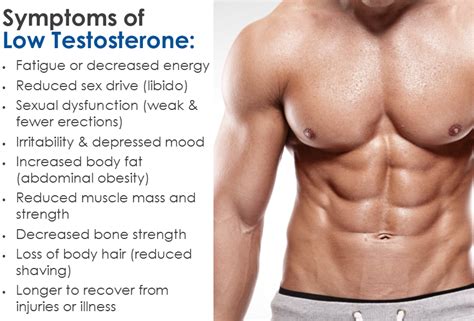What’s the optimal recovery protocol for peak gym performance & longevity?

The Unsung Hero of Gains: Why Recovery Matters More Than You Think
In the relentless pursuit of strength, muscle, and endurance, many gym-goers focus almost exclusively on what happens during their training sessions. They meticulously track sets, reps, and weights, yet often neglect the equally, if not more, critical component: recovery. Optimizing your recovery protocol isn’t just about bouncing back faster for your next workout; it’s the bedrock of sustainable progress, injury prevention, and long-term gym longevity.
True peak performance isn’t achieved by constantly pushing harder, but by intelligently balancing stress with adequate repair and adaptation. Neglecting recovery is a fast track to plateaus, burnout, and potential injury, ultimately derailing your fitness journey. So, how can you engineer an optimal recovery strategy that supports both immediate performance and a lifelong relationship with the gym?

Pillar 1: The Non-Negotiable Power of Sleep
Sleep is arguably the single most potent recovery tool at your disposal. During deep sleep cycles, your body repairs muscle tissue, synthesizes protein, releases growth hormone, and consolidates motor skills learned during training. Skimping on sleep not only impairs physical recovery but also compromises cognitive function, motivation, and hormone balance.
- Aim for 7-9 Hours: Most active individuals require at least 7-9 hours of quality sleep per night.
- Establish a Routine: Go to bed and wake up at consistent times, even on weekends.
- Optimize Your Environment: Keep your bedroom dark, cool, and quiet.
- Limit Blue Light: Avoid screens (phones, tablets, computers) for an hour or two before bed.
Pillar 2: Fueling Recovery with Strategic Nutrition & Hydration
What you put into your body directly impacts its ability to repair, rebuild, and refuel. Nutrition isn’t just about energy for your workout; it’s paramount for post-exercise recovery and adaptation.
Protein for Repair and Growth
Adequate protein intake is crucial for muscle protein synthesis (MPS), the process by which your body repairs damaged muscle fibers and builds new ones. Aim for 1.6-2.2 grams of protein per kilogram of body weight, distributed throughout the day.
Carbohydrates for Replenishment
Carbohydrates are your body’s primary energy source. Post-workout, they’re essential for replenishing muscle glycogen stores, which are depleted during intense exercise. Prioritize complex carbohydrates for sustained energy and simple carbs immediately post-workout if glycogen replenishment is urgent.
Hydration is Key
Water plays a vital role in virtually every bodily function, including nutrient transport, temperature regulation, and joint lubrication. Dehydration can significantly impair performance and recovery. Drink plenty of water throughout the day, especially before, during, and after training.

Pillar 3: Active Recovery & Mobility Work
While complete rest days are important, active recovery can enhance blood flow, reduce muscle soreness, and improve flexibility without adding significant stress. Light activities help flush metabolic waste products and deliver fresh nutrients to working muscles.
- Low-Intensity Cardio: A brisk walk, light cycling, or swimming for 20-30 minutes.
- Stretching & Foam Rolling: Improve range of motion, alleviate muscle tightness, and release trigger points.
- Yoga or Pilates: Enhance flexibility, core strength, and body awareness.
Incorporate these activities on off-days or as a warm-up/cool-down to your main training sessions.

Pillar 4: Mastering Stress Management & Mental Well-being
Recovery isn’t just physical; it’s deeply psychological. Chronic mental stress elevates cortisol levels, which can hinder recovery, impair immune function, and contribute to overtraining syndrome. Effective stress management is a cornerstone of long-term fitness success.
- Mindfulness & Meditation: Practice techniques to calm the nervous system.
- Hobbies & Downtime: Engage in activities outside of the gym that you enjoy.
- Social Connection: Spend time with supportive friends and family.
- Nature Exposure: “Forest bathing” or simply spending time outdoors can reduce stress.
Pillar 5: Strategic De-loads and Periodization
Smart programming incorporates planned breaks and variations in intensity. Constantly pushing to your maximum without strategic retreats is a recipe for burnout and injury. De-loads, where you significantly reduce volume or intensity for a week, allow your body to fully recover and adapt, often leading to stronger performance afterward.
Periodization, the systematic planning of training, ensures that your body gets appropriate recovery phases built into your long-term plan. This might involve cycles of high-intensity training followed by lower-intensity phases, or alternating between different types of training.

Listen to Your Body: The Ultimate Recovery Gauge
While these protocols provide a robust framework, the most crucial element is learning to listen to your body. Pay attention to persistent soreness, unusual fatigue, irritability, disturbed sleep, or a noticeable drop in performance. These are all signs that your recovery may be inadequate and that you need to adjust your training or recovery efforts.
Don’t be afraid to take an extra rest day, reduce your training volume, or prioritize sleep when your body signals it needs it. Ignoring these signals is a common mistake that stalls progress and increases injury risk.

Conclusion: The Holistic Path to Sustainable Gains
Optimal recovery isn’t a single hack or a one-size-fits-all solution; it’s a holistic, multi-faceted approach integrated into your fitness lifestyle. By prioritizing quality sleep, intelligent nutrition, active recovery, stress management, and smart training programming, you create an environment where your body can not only recover from intense workouts but truly adapt, grow, and thrive.
Embrace recovery not as an interruption to your training, but as an essential, performance-enhancing component of your journey towards peak gym performance and a lifetime of robust health and fitness. Consistency in these recovery protocols will yield far greater dividends than simply pushing harder in the gym.






